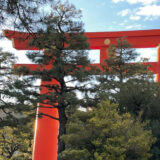Gofun1 is a unique white pigment made from the shells of various shellfish, such as oysters, clams, and scallops. Its primary component is calcium carbonate, manifesting as smooth, fine particles that lack gloss, rendering a distinctive matte texture. In its raw form, gofun doesn’t possess adhesive properties. Thus, it’s fixed to its base, or support medium, by adding a solution of nikawa—a gelatin produced from the skin or bones of animals or fish.
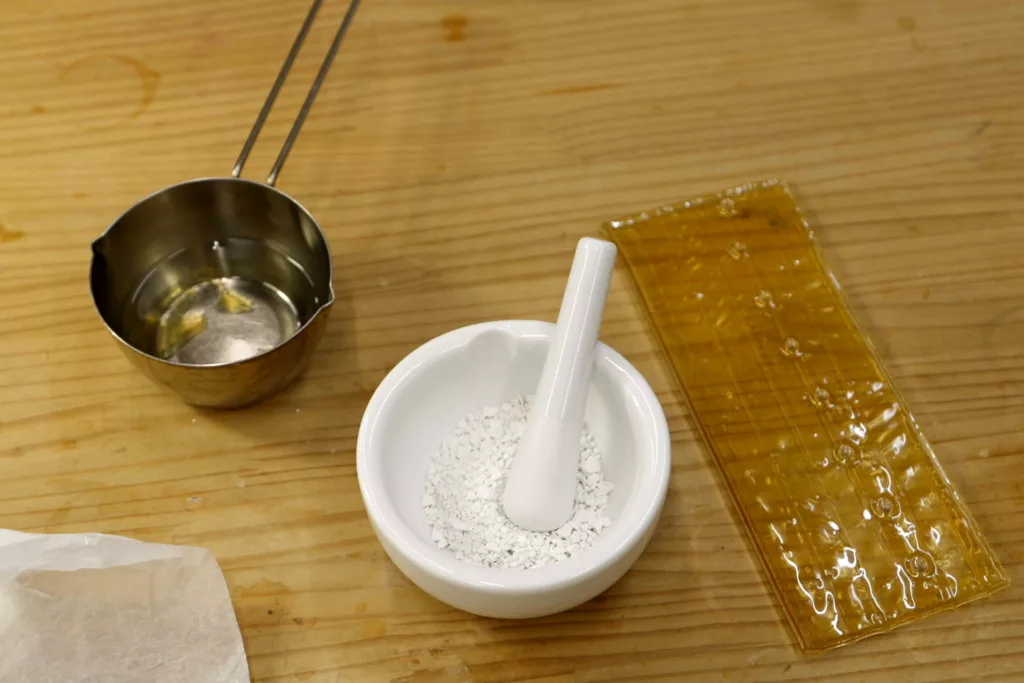
Because gofun can be prone to cracking or peeling, it’s carefully and slowly mixed with the nikawa to ensure they blend thoroughly, which helps prevent such issues.
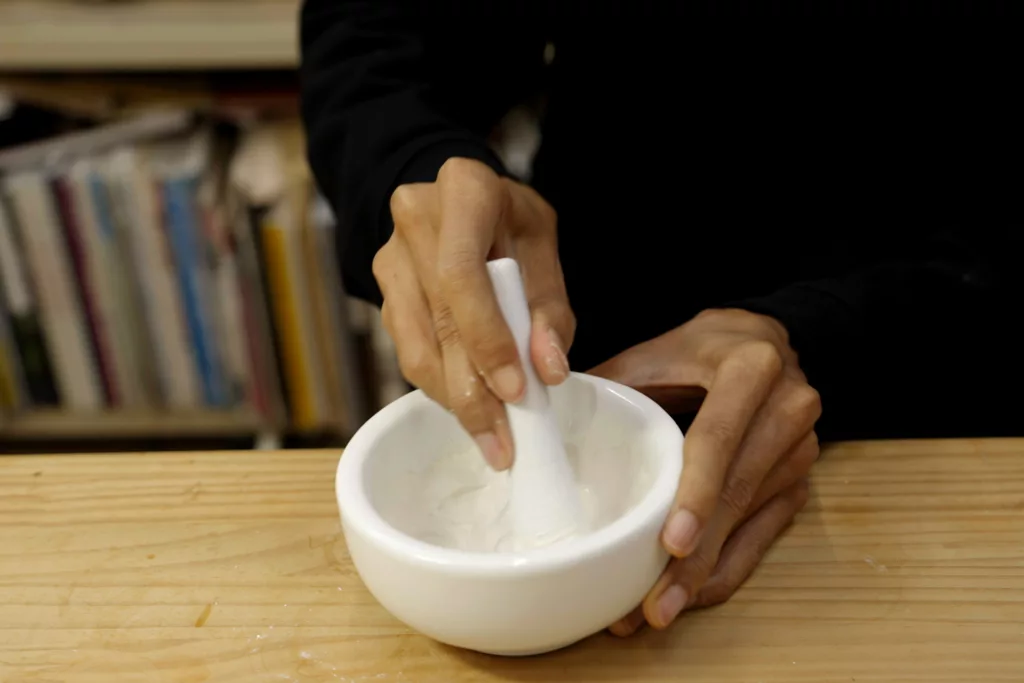
The applications of gofun are wide and varied—it plays a significant role in Japanese painting, used not only for its pure white color but also frequently mixed with other pigments, particularly in traditional Japanese paintings with a limited color palette.

A prominent example of gofun’s crucial role is its use in creating traditional Kyoto dolls, specifically Gosho dolls.
Gosho dolls are primarily shaped from paulownia wood, which serves as the base for the doll. The base is then coated with layers of gofun dissolved in nikawa. This process involves applying several layers—undercoat, mid-coat, and topcoat—each with varying concentrations of nikawa. This layering could be repeated dozens of times, with the doll being polished with sandpaper or horsetail in between. The process is incredibly time-consuming, limiting the production quantity. However, the final product, a doll with a lustrous skin texture, exudes an aura of sophistication and spirituality—a testament to the refined skill of its creator.
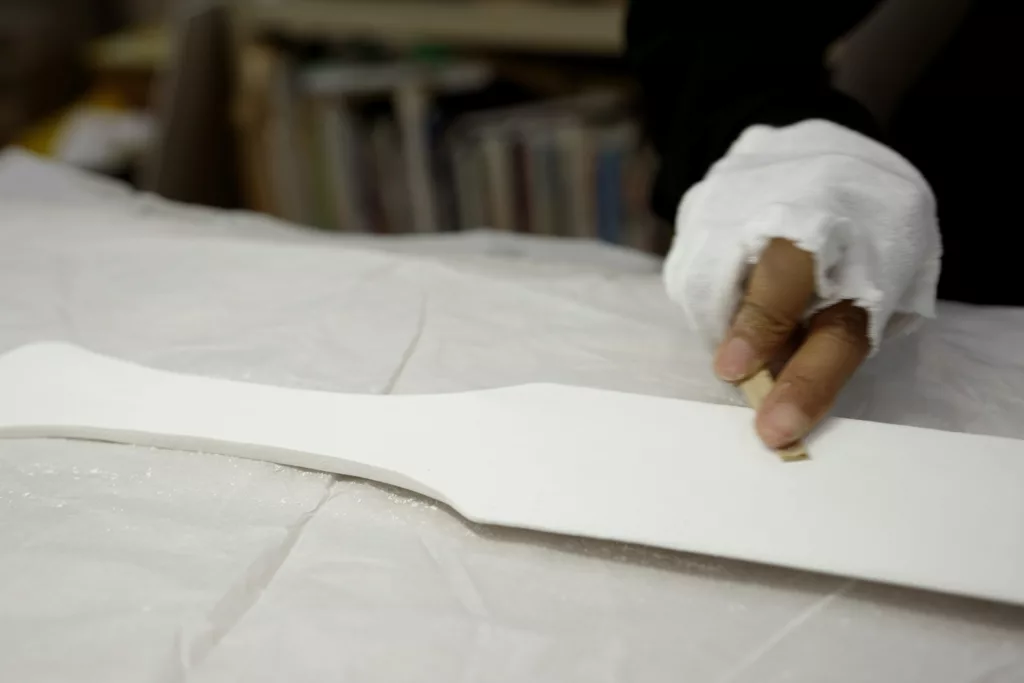
One artist currently featured on Kogei art KYOTO, Shogo Okamoto, employs a nearly-lost technique known as ‘wiping’ to bring a gloss to the gofun. His work brings this gofun finish to unconventional materials like stainless steel and titanium, resulting in pieces reminiscent of ivory or ceramic, complete with a mirrored surface. It’s a striking modern twist on a cherished traditional art form.
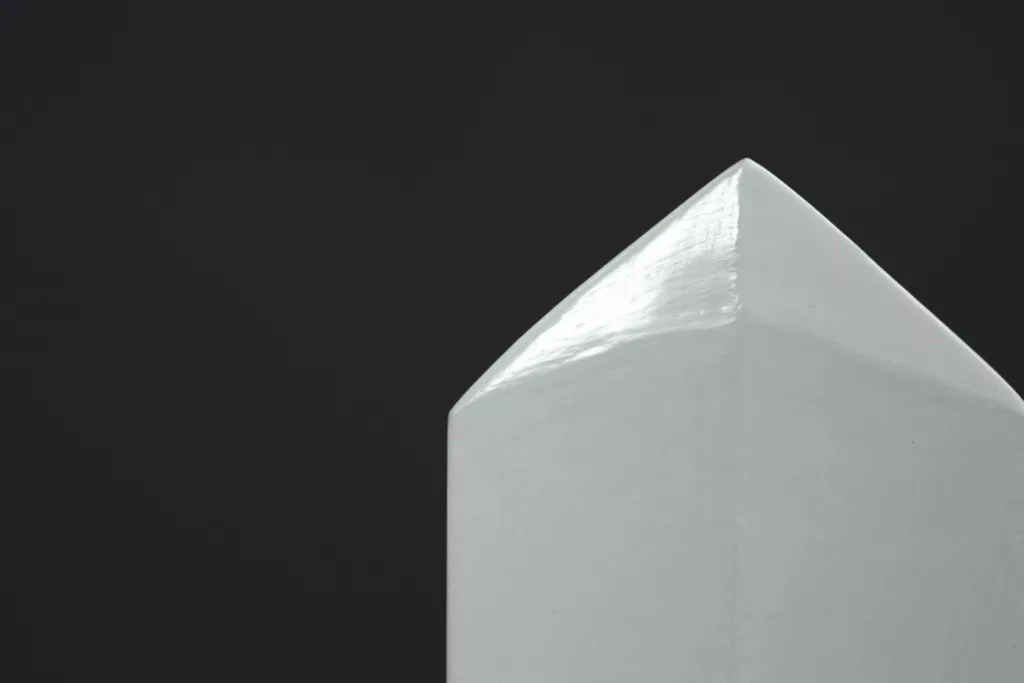
Click here to see the works of Ningyo(Doll) artist Shogo Okamoto
